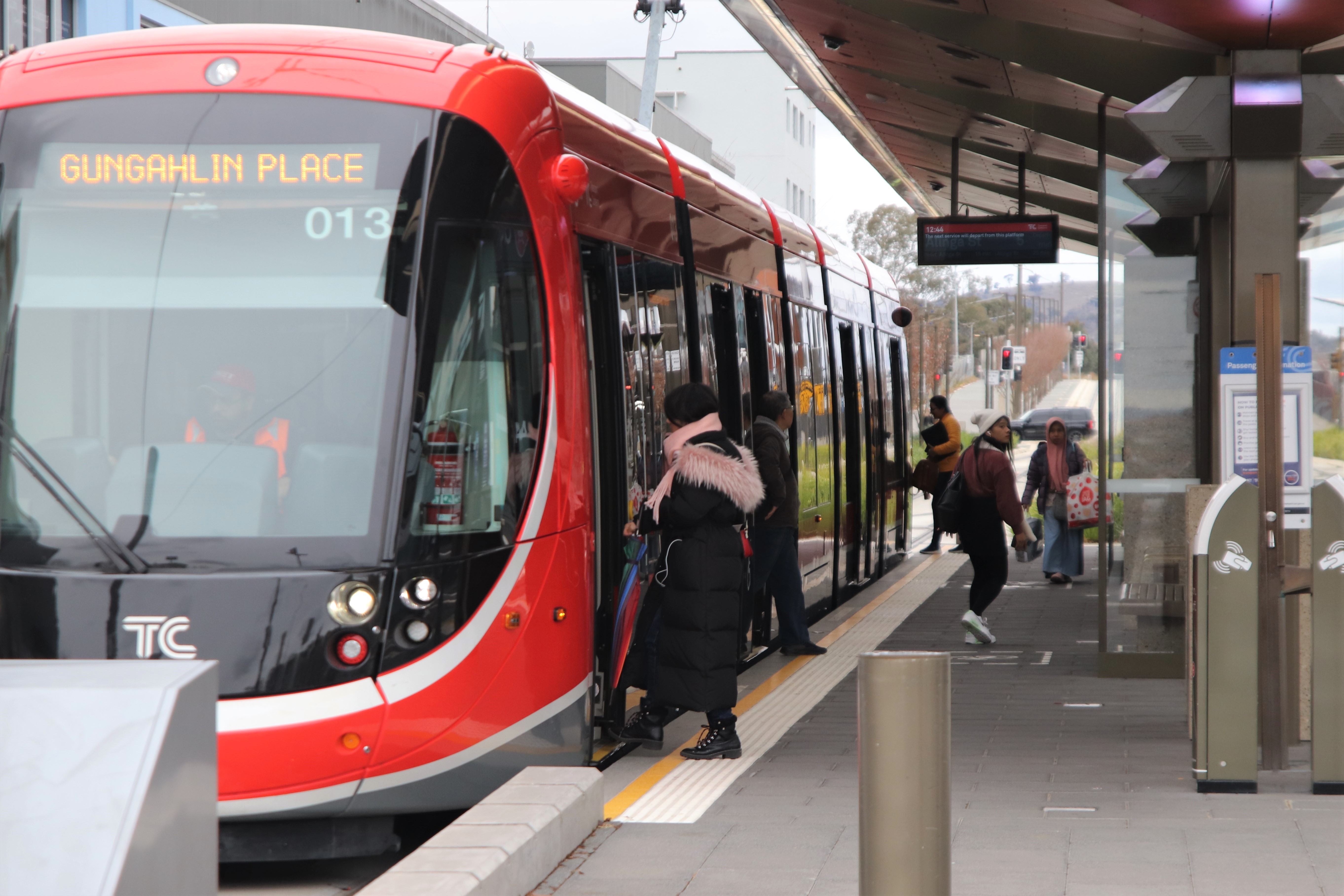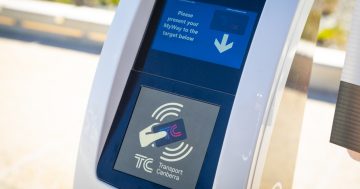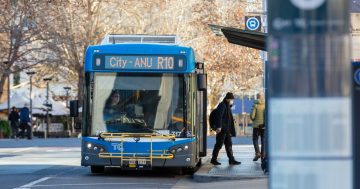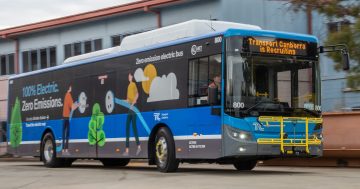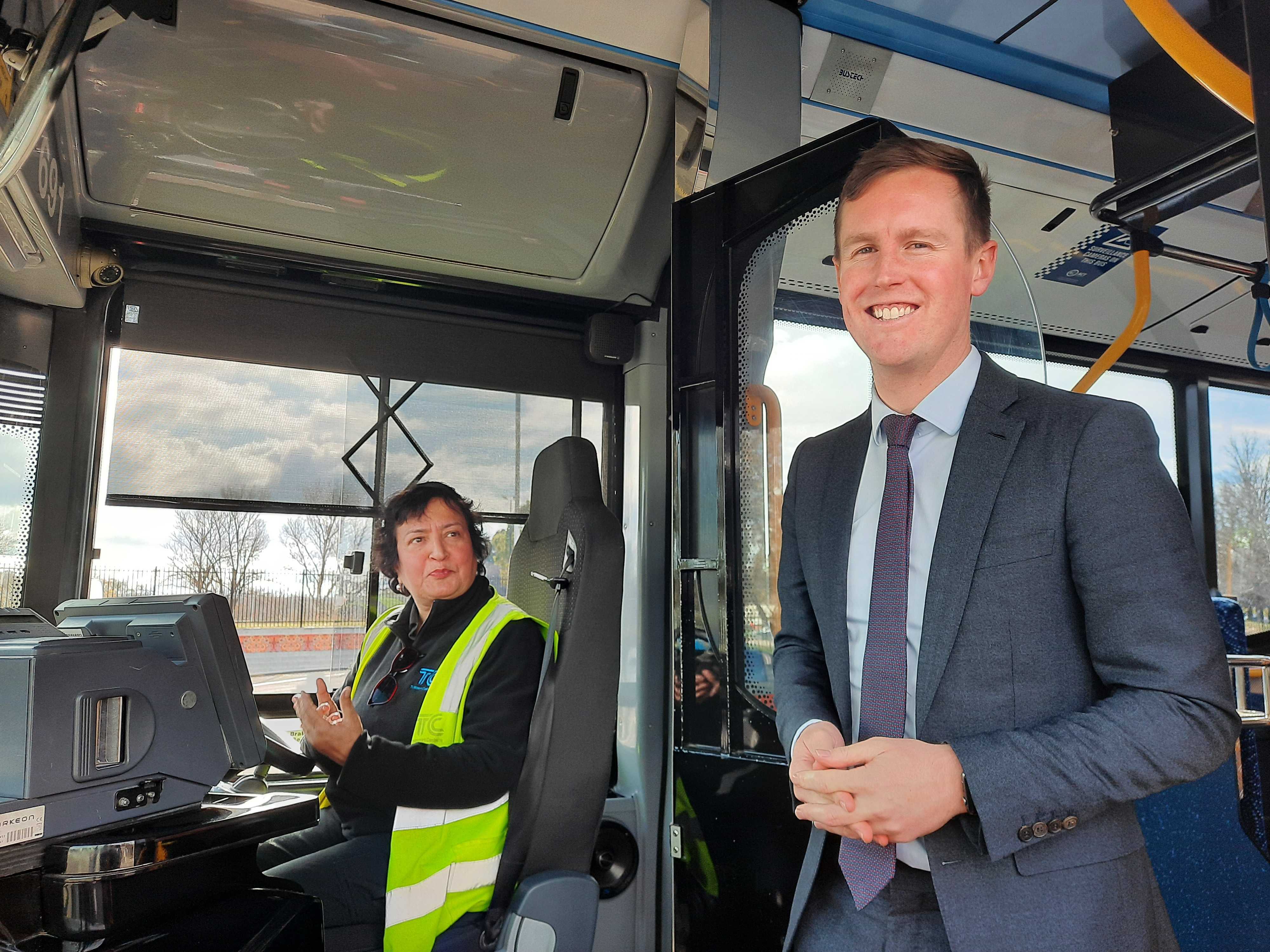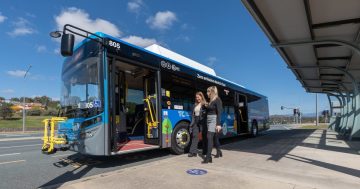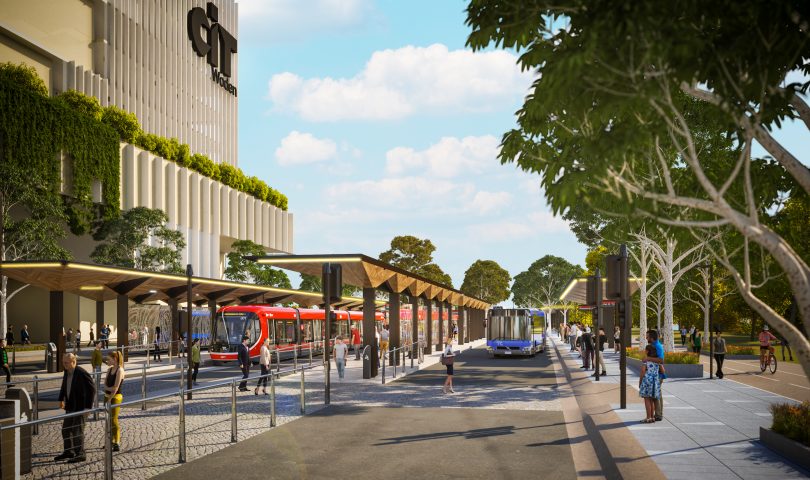
The new Woden Interchange will be a multimodal facility. Image: ACT Government.
Transport and urban development will be more tightly linked under a new plan to build an integrated network that will guide the ACT Government for the next 30 years.
Transport Canberra and City Services has contracted consultant SMEC Australia to develop a Multimodal Network Plan so it can implement the 2020 Transport Strategy which aims to develop a sustainable system with seamless connections involving all modes of transport from buses and light rail to cars, freight, e-scooters, bicycles and walking.
This is a new approach in the ACT where, like other jurisdictions, transport planning has previously focused on individual modes.
It will also bring together other policy arms such as the Planning and Climate Strategies, and the contract document hints at the key role light rail will play in the future development of Canberra.
“The MNP shall also consider the city-shaping opportunities offered by transport initiatives to help influence future land use, liveability and economic growth,” the contract says.
The $442,000 contract also reveals how ill-equipped the current bureaucracy is to make the Transport Strategy a reality.
It says that, at present, it is unclear precisely how the objectives of the Strategy will be translated into tangible actions but that the ACT Public Service is not set up for cross-agency collaboration on the Strategy’s common goals.
TCCS is yet to develop internal processes to ensure that teams are working towards common Strategy objectives, while other directorates and agencies do not have formal structures to ensure related initiatives, especially planning and climate change, are consistent with the Strategy.
SMEC’s initial research and consultation will focus on ACT Government agencies and the Commonwealth’s planning agency for the Territory, the National Capital Authority.
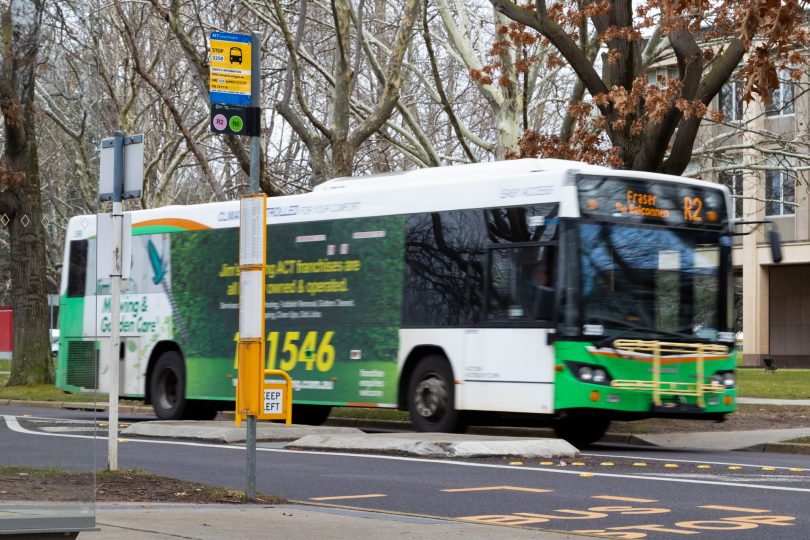
The bus network will face technological changes. Photo: Michelle Kroll.
A government spokesperson said the Multimodal Network Plan was an internal government document that would help guide transport investment and government decision-making over the coming decades.
“That is why it is being developed in close collaboration with ACT and Commonwealth government agencies, with the assistance of specialist transport planning expertise,” the spokesperson said.
“Multimodal networking planning will help the government to make balanced transport investments in infrastructure to support all modes of transport – from walking, cycling and scooting, to public transport and private vehicles. This will ensure the projects we invest in link to the objectives and priorities outlined in the Transport Strategy.”
According to the contract, the ACT Multimodal Network Plan will include integrated infrastructure and non-infrastructure initiatives across all transport modes and also consider the facilities needed to support connections such as interchanges, park-and-ride and bicycle end-of-trip facilities, and transit-oriented developments.
It outlines three stages: research and the development of different scenarios; transport project options and preferred solutions; prioritising solutions and production of the MNP, including a detailed list of potential transport projects and their timing.
The MNP will take a coordinated approach to identify future transport needs and infrastructure, including interchanges between both public and private transport modes, the concurrent delivery of complementary projects, multimodal initiatives within a single route or corridor; and end-of-trip connections, such as paths to destinations, car parking and facilities for cyclists.
Although the MNP will not explicitly cover aviation, it should consider access to Canberra Airport and its role as a major transport hub for the region.
The MNP will also need to consider changing technologies, not just electric vehicles but also autonomous vehicles and different ownership models – public, private, shared vehicles, and mobility as a service, where users plan, book, and pay online for multiple transport options.
SMEC is to deliver the MNP in October this year.
Original Article published by Ian Bushnell on Riotact.





